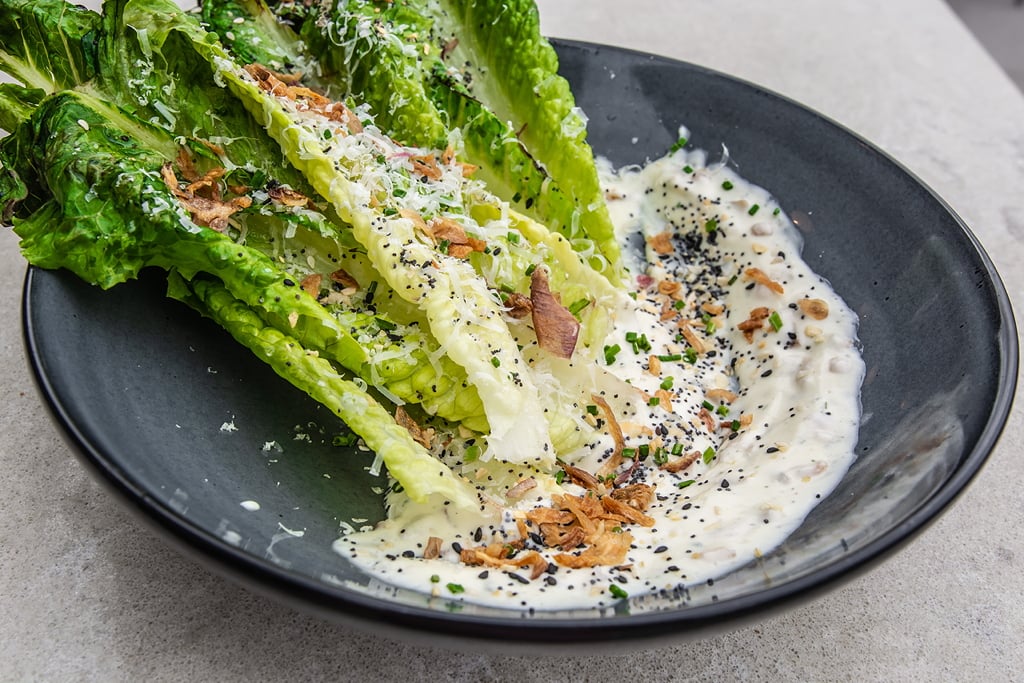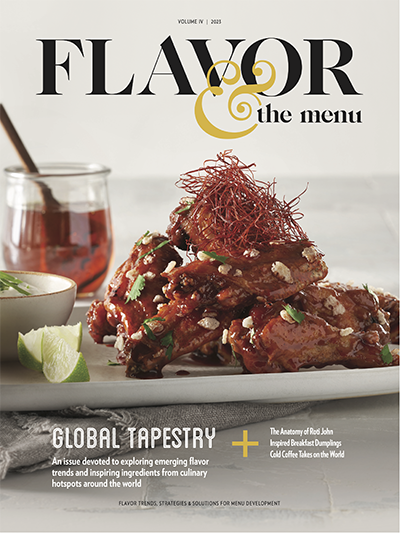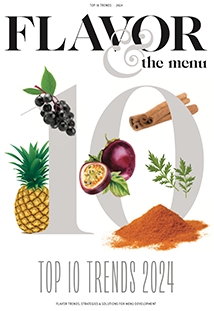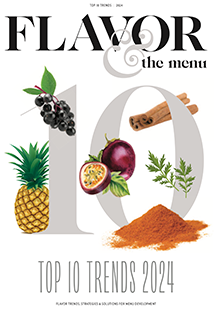
Trend Insights: Modern Salad Dressings
Chefs weigh in on leveraging next-level dressings
Trend Insights: Modern Salad Dressings
Chefs weigh in on leveraging next-level dressings
By Flavor & The Menu
February 6, 2024
By Flavor & The Menu
February 6, 2024
Hands down, the biggest opportunity is to create a signature dressing that guests specifically seek out from your brand. Pair that with a strategic branded partner to drive traffic or encourage that incremental on-premise purchase. Dressings and vinaigrettes can easily be utilized outside of the salad realm. Build flavor layers using them as a marinade, injection or baste. For example, incorporate a vinaigrette into melted butter for a flavorful baste for steak or as a toasting medium for hamburger buns.
—ADAM MOORE, Chef/President, Flashpoint Innovation
This is a category that has no limits; salads can be topped with almost anything, but the dressing is where it all ties together. Sweet, savory and unique fit into this category. Global mash-ups, integrating flavors, going extreme or keeping it simple are drivers expanding this opportunity.
—JASON HERNANDEZ, Chef/Founder, Blade & Tine Culinary Consulting
Salads with complex dressings are a hallmark of Southeast Asia. While not usually fat-based, they are packed with umami, featuring fermented ingredients like fish sauce, chile-bean pastes and even fermented tea leaves.
—ROBERT DANHI, Curator of Cultures, Chef Danhi & Co.
This menu category thrives on pushing boundaries, taking inspiration from vegetable and fruit juices to craft unique dressings. Leafy greens, once limited to the salad base, now play multifaceted roles, including being transformed into dressings. Consider an arugula vinaigrette, made with roasted garlic, green apple, cucumber and lemon, drizzled over a tossed salad of roasted Delicata squash, red beets, Honeycrisp apples, farro, herbed goat cheese and crispy chickpeas.
—ROSALYN DARLING, Founder/Principal Innovation Chef, Darling Culinary, LLC
Hands down, the biggest opportunity is to create a signature dressing that guests specifically seek out from your brand. Pair that with a strategic branded partner to drive traffic or encourage that incremental on-premise purchase. Dressings and vinaigrettes can easily be utilized outside of the salad realm. Build flavor layers using them as a marinade, injection or baste. For example, incorporate a vinaigrette into melted butter for a flavorful baste for steak or as a toasting medium for hamburger buns.
—ADAM MOORE, Chef/President, Flashpoint Innovation
This is a category that has no limits; salads can be topped with almost anything, but the dressing is where it all ties together. Sweet, savory and unique fit into this category. Global mash-ups, integrating flavors, going extreme or keeping it simple are drivers expanding this opportunity.
—JASON HERNANDEZ, Chef/Founder, Blade & Tine Culinary Consulting
Salads with complex dressings are a hallmark of Southeast Asia. While not usually fat-based, they are packed with umami, featuring fermented ingredients like fish sauce, chile-bean pastes and even fermented tea leaves.
—ROBERT DANHI, Curator of Cultures, Chef Danhi & Co.
This menu category thrives on pushing boundaries, taking inspiration from vegetable and fruit juices to craft unique dressings. Leafy greens, once limited to the salad base, now play multifaceted roles, including being transformed into dressings. Consider an arugula vinaigrette, made with roasted garlic, green apple, cucumber and lemon, drizzled over a tossed salad of roasted Delicata squash, red beets, Honeycrisp apples, farro, herbed goat cheese and crispy chickpeas.
—ROSALYN DARLING, Founder/Principal Innovation Chef, Darling Culinary, LLC







